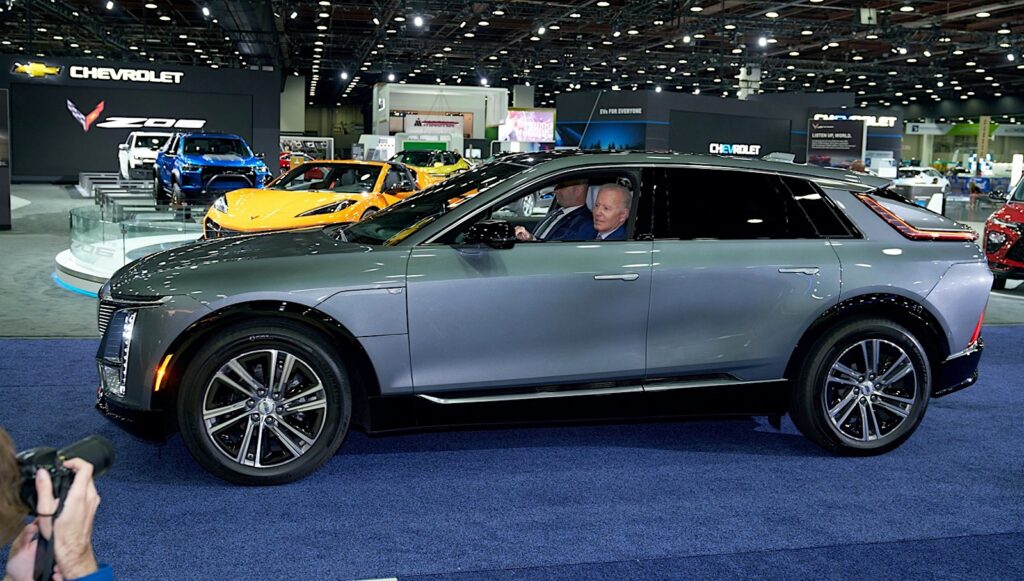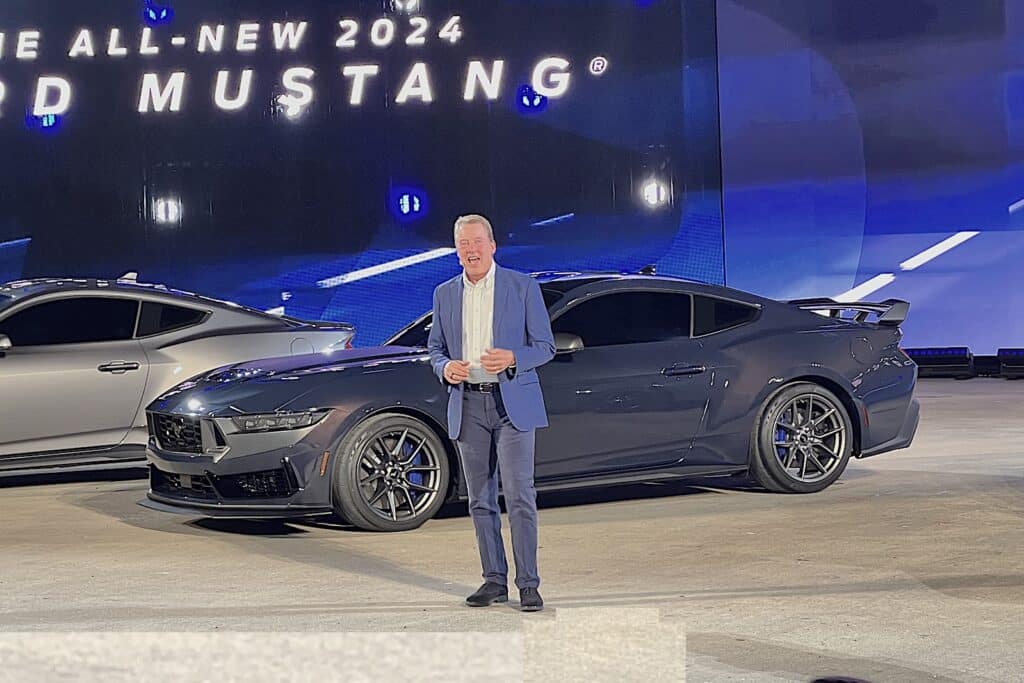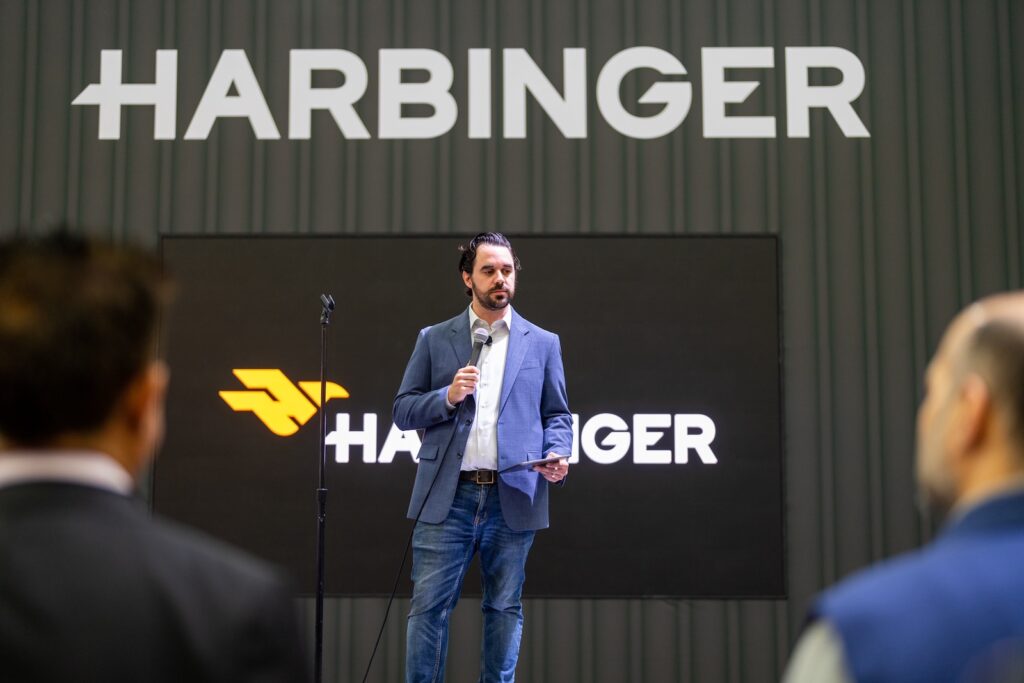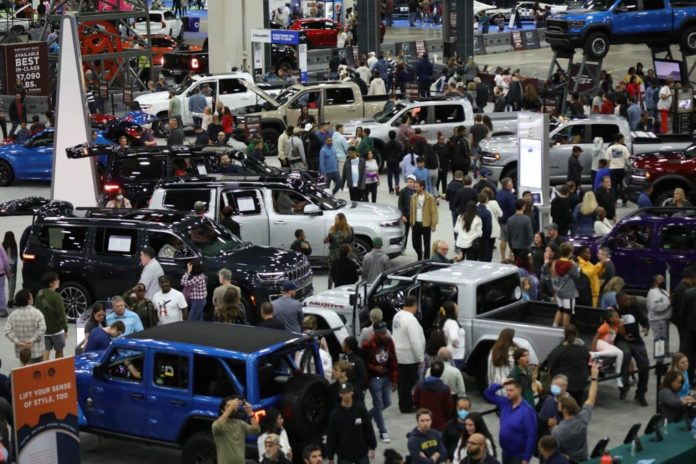Detroit’s North American International Auto Show should see a significant increase in new car previews when it holds its annual media days on Sept. 13 and 14.
The Detroit Auto Dealers Association, which sponsors the annual event, said it has received commitments from all three of the Detroit-based manufacturers promising to stage “six reveals” this year. That marks a significant increase from the 2022 NAIAS which was all but devoid of debuts.
“We are thrilled by the tremendous support of our hometown Detroit Three in bringing these exciting reveals and their products and vehicle activations to the show,” said Detroit Auto Show Chairman Thad Szott. “We expect the momentum created by these unveilings to generate outstanding media and consumer attendance and interest.”
Pandemic shake-up
First held in 1989, NAIAS was considered one of the world’s preeminent auto shows, with as many as 70 different products debuting during its peak around the turn of the millennium. As with other auto shows, however, industry participation began to slip in the years leading up to the COVID pandemic.

Organizers planned to shift the show’s timing from its longtime January slot to one in autumn prior to the pandemic. But NAIAS was cancelled in 2020. An abbreviated version of the show was held at the M1 race track north of Detroit in 2021, with the event returning to its normal venue, Detroit’s newly renamed Huntington Place convention center, in 2022. The show will be held there again this coming September.
The past two years saw only a couple of previews, most notably the launch of the seventh-generation 2024 Ford Mustang in September 2022.
A guessing game
Organizers and manufacturers aren’t revealing what will be on hand this year. But all three of the local carmakers will participate.
“The Detroit Auto Show is a longstanding tradition that brings the community, consumers, car enthusiasts and our employees together,” Ford chief communications office Mark Truby said in a joint statement. “We’re excited to return this September and look forward to making a splash with some of our most iconic and important new vehicles.”

We’re excited to welcome consumers to our hometown as we showcase never before seen products in addition to our full portfolio of award-winning bestselling products and brands,” added General Motors Vice President of Product and Brand Communications Michelle Malcho.
“It’s the Detroit show, which makes it especially exciting to offer consumers the opportunity to go for a ride in our Jeep and Ram vehicles on our specialized test tracks, as well as check out all the latest offerings from the rest of our North American brands,” echoed Rick Denau, the head of product and brand communications at Stellantis. “We also greatly look forward to showcasing new Ram and Jeep vehicles there for the first time, here in our hometown.”
Will foreign brands return?
What remains to be seen is whether any foreign brands will use the Detroit show to launch new model — or even set up displays. A significant number of import marques have been no-shows in recent years, including brands like Audi, Mazda, Mercedes-Benz and Volvo.

Toyota has signaled plans to return to Detroit, at least by setting up a display on the show floor. But it’s unclear who will follow — and whether any of the imports will debut new products.
An official at Mercedes told TheDetroitBureau.com on background the German carmaker just didn’t sell enough vehicles in the Detroit area to justify the expense. Even a basic display can cost more than $1 million, and a large stand with an adjunct product preview can cost many times more.
Auto shows faltering worldwide
But Detroit isn’t unique. Auto shows, in general, have been losing momentum in recent years. This year’s Chicago Auto Show saw only a half-dozen product introductions, with a number of brand no-shows. The Los Angeles and New York events were only slightly bigger.
The Geneva Motor Show hasn’t taken place since before COVID and many industry watchers think it won’t return in 2024 — if ever. The Frankfurt Motor Show ended its run four years ago. And the Tokyo Motor Show is barely a quarter of its size back in the 1990s.

